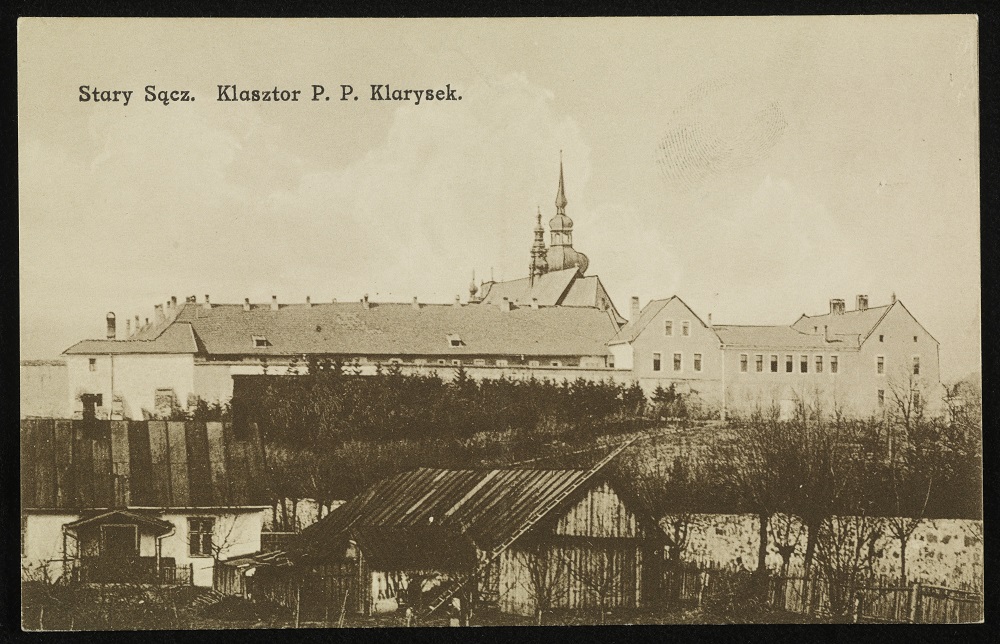On the southern edge of Poland, at the foot of the Beskid Mountains, in the valley of the Poprad River lies a little town - Stary Sącz. Already from a distance, the visitor will see the monastic buildings with the Holy Trinity Church, the belfry towering over them and the little ave-bell. In front of the monastery, at the foot of the hill, the vast monastic garden, surrounded by a high stone wall, climbs uphill to the walls of the ancient buildings. From the highway, one can distinguish fruit trees, vegetable plots and French beans climbing up tall poles, with little chapels between them.
This image emanates peace and harmony. The harmony is cultivated by the Nuns of St Clare, who settled in Stary Sącz in 1280, at the invitation of Bolesław the Modest, Duke of Cracow’s wife – the Hungarian princess Kinga of the Arpad dynasty, who, in return for her dowry, which she offered for the defence of Poland, her new homeland, against the Tartars, she received from her husband as a gift the town of Stary Sącz with twenty eight neighbouring villages. She promptly founded on her land a monastery for the female branch of the Franciscan order – the Nuns of St Clare. After her husband’s death, she herself entered this monastery and died there in the aura of sainthood in 1292. In 1690, at King John III Sobieski’s request, Pope Alexander III beatified her, and recently she was canonised by Pope John Paul II. St Kinga left behind a flourishing town, prosperous villages and a monastery in which in 1970, the history of Polish culture was to be re-written.
In that time, during some conservation work, mysterious scraps of parchment manuscripts were discovered in the covers of old liturgical books, where they served as the bookbinder’s front- and end-paper. An eminent expert on early music, the musicologist Mirosław Perz, identified these fragments as hitherto unknown 13th-century polyphonic motets, which proved that the Stary Sącz monastery was in the mainstream, even in the avant-garde, of 13th-century European music life. It appeared that the provincial Stary Sącz in Poland was in the 13th century a centre of cultural activity which could match even Paris, the cultural capital of Europe in that age. The repertoire on the parchment scraps included
Magnus Liber Organi, the epoch-making work of the two great reformers of European music at the turn of the 12th century, Perotinus and Leoninus, preserved to our time only in fragments. These musicians opened up new worlds for European music by laying the foundations for the Parisian Notre-Dame polyphony. After many centuries of the dominance of monodic chant, this style reflected the artistic achievements and ambitions of the musical environment that created it. In Stary Sącz, the Parisian polyphony of Leoninus and Perotinus was known as early as the 13th-century! Not only known, but also composed – because among the Stary Sącz finds there is also a work which, judging by all the available evidence, was written in this monastery – the 4-part conductus
Omnia beneficia, dated to the early 14th century.
Dr Mieczysław Kominek
Read more:
The first monuments of Polish music. Early Polish composers


